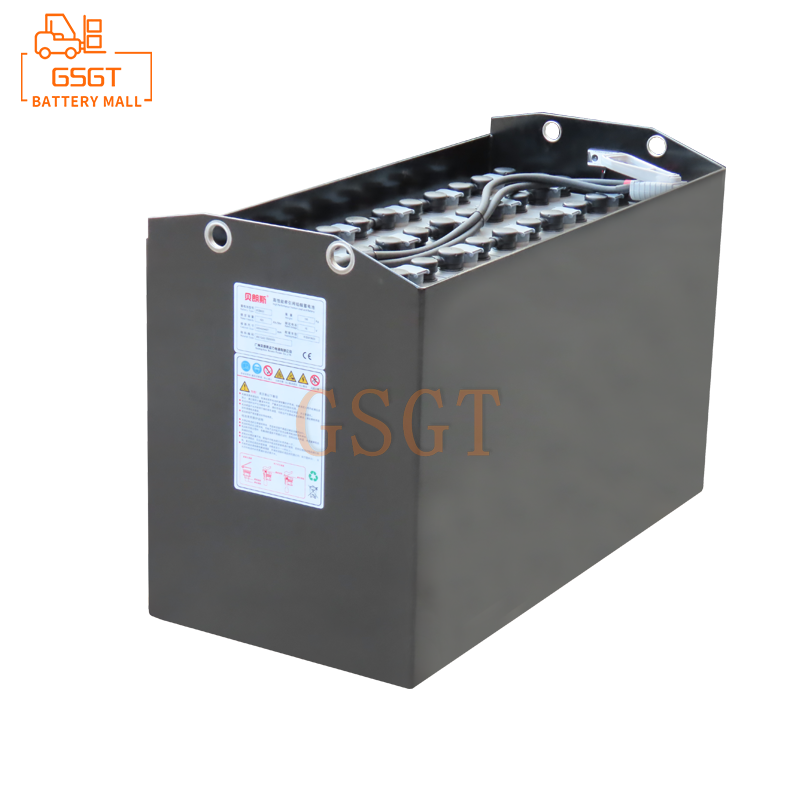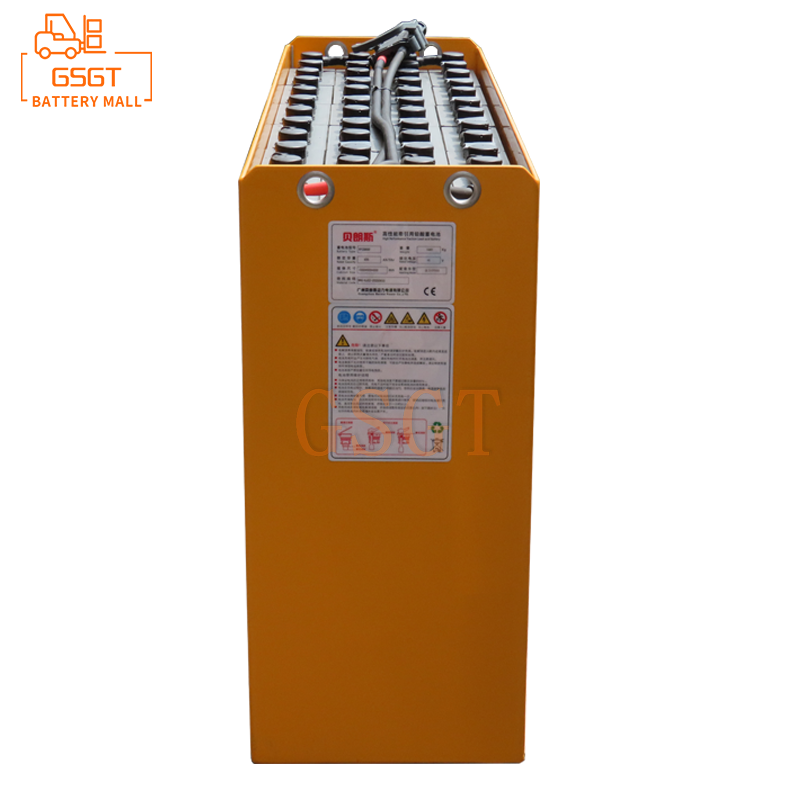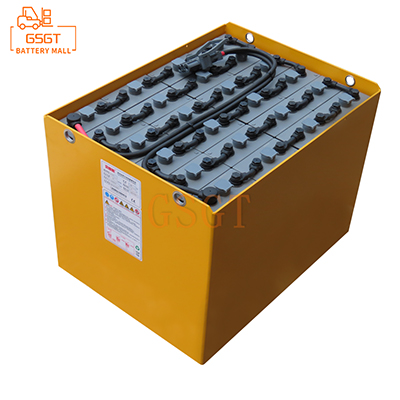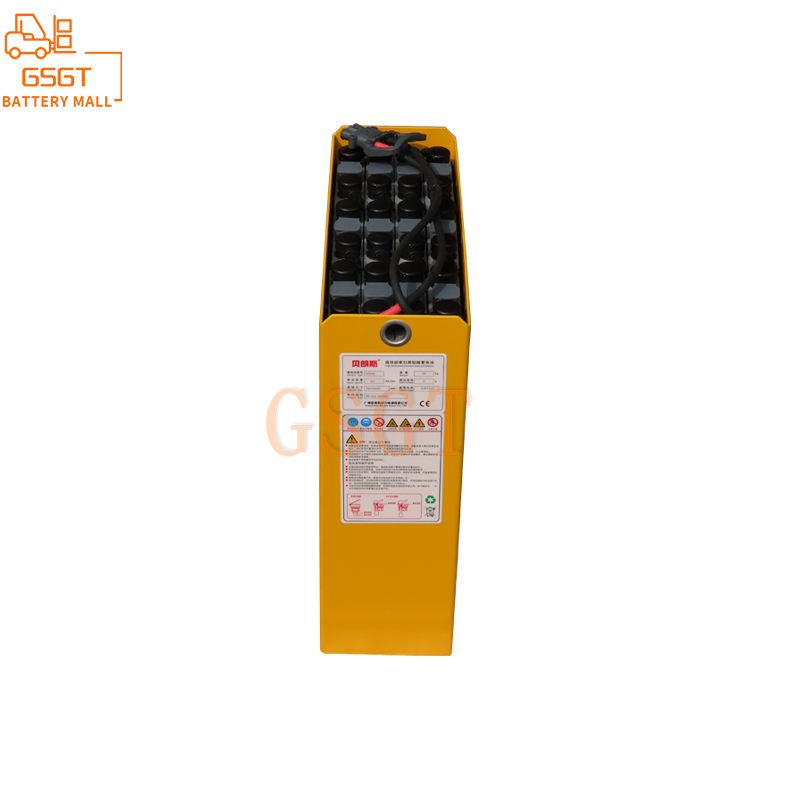Time:2025-04-22 11:53:59
Browse:529
Abstract
This article conducts an in-depth discussion on the adaptation and selection of lead-acid batteries for forklifts under different working conditions. The power demand characteristics of forklifts under different working environments, working intensities and other working conditions were analyzed in detail. The relationship between the performance parameters of lead-acid batteries and their adaptation to different working conditions was expounded. The aim is to provide comprehensive and practical guidance for forklift users in the selection of lead-acid batteries, helping to improve the working efficiency of forklifts, extend the service life of batteries and reduce operating costs.
1. Introduction
Forklifts, as indispensable and important equipment in modern logistics, warehousing and other fields, have a crucial impact on operational efficiency and operating costs due to their power sources. Lead-acid batteries occupy an important position in the power system of forklifts due to their advantages such as mature technology, relatively low cost and relatively convenient maintenance. However, the working conditions of forklifts are complex and diverse, and different working conditions have significant differences in performance requirements for lead-acid batteries. If the choice is inappropriate, it will not only affect the normal operation of the forklift, but also may shorten the service life of the battery and increase the operating cost. Therefore, in-depth research on the adaptation and selection of lead-acid batteries for forklifts under different working conditions has important practical significance.
2. Classification of Common Working Conditions of Forklifts
(1) Working Environment
"Indoor environment
The indoor working environment is usually relatively stable, with moderate temperature and humidity, and no direct exposure to wind or sun. However, due to the limited indoor space, forklifts need to frequently perform operations such as starting, braking, and turning, which requires a relatively high instantaneous discharge capacity of the battery. For instance, when conducting goods handling and stacking operations in narrow passageways within a warehouse, forklifts need to complete multiple starts and accelerations within a short period of time to enhance operational efficiency. Meanwhile, the indoor environment has relatively strict requirements for noise and exhaust emissions. As a clean energy source, lead-acid batteries meet these requirements.
2. Outdoor environment
The outdoor working environment is complex and changeable, and is greatly influenced by factors such as weather and terrain. In high-temperature environments, such as outdoor loading and unloading operations in summer, the evaporation rate of the electrolyte in the battery increases, which can easily lead to the drying up of the electrolyte and affect the battery performance. In low-temperature environments, such as winter operations in cold regions, the chemical reaction rate of the battery slows down, the battery capacity decreases, and it becomes difficult to start. In addition, outdoor operations may encounter bumpy roads, which poses higher requirements for the shock resistance performance of the battery. For instance, during outdoor loading and unloading operations at construction sites, forklifts need to travel on uneven ground. Jolts and vibrations may damage the internal plates of the battery, affecting its lifespan.
(2) Work Intensity
1. **Light load operation**
Light-load operation usually refers to the situation where the forklift moves goods of relatively light weight, the operation time is short, and the operation frequency is low. For instance, in a small warehouse, when it comes to the occasional handling and transportation of goods, the weight of each forklift does not exceed one ton, and the daily operation time may only be 2 to 3 hours, with relatively long intervals between operations. Under this working condition, the forklift has relatively low requirements for the capacity and discharge current of the battery.
2. ** Heavy-load operation **
Heavy-duty operation refers to the situation where forklifts handle large amounts of goods, operate for long periods of time, and operate frequently. For instance, in the loading and unloading of goods in large logistics centers, forklifts need to frequently handle goods weighing 3 to 5 tons or even heavier, and the continuous operation time each day may exceed 8 hours. Under such working conditions, forklifts have high requirements for the capacity, continuous discharge capability and fast charging performance of the battery. Long-term and high-current discharge will cause the battery to heat up severely. If heat dissipation is not timely, it will accelerate the aging of the battery plates and reduce the battery's lifespan.
3. The Relationship between Performance Parameters and Working Conditions of Lead-Acid Batteries
(1) Capacity
Capacity is one of the important performance parameters of lead-acid batteries and is usually expressed in ampere-hours (Ah). When choosing the capacity of the battery, it needs to be determined based on the working conditions of the forklift. For forklifts operating under light loads, since the electricity demand is relatively small, batteries with smaller capacity can be selected. For instance, for small warehouse forklifts with short daily operation hours and light cargo handling, a battery of 100-150Ah is sufficient to meet the daily operation requirements. For forklifts that operate under heavy loads, to ensure they can work continuously, large-capacity batteries need to be selected. For forklifts in large logistics centers, it may be necessary to choose batteries with a capacity of 300-500Ah or even larger. In addition, the impact of the working environment on capacity also needs to be considered. In low-temperature environments, the actual available capacity of the battery will decrease. Therefore, it is necessary to appropriately increase the capacity of the battery to ensure the normal operation of the forklift.
(2) Discharge rate
The discharge rate refers to the ratio of the current magnitude of a battery during discharge to its rated capacity within a specified period of time. When forklifts are in operation such as starting, accelerating and climbing slopes, they need to discharge a large current instantaneously, which requires the battery to have a relatively high discharge rate. For indoor forklifts that frequently start and accelerate in narrow Spaces, as well as outdoor forklifts that need to frequently carry heavy objects and climb slopes, lead-acid batteries with a higher discharge rate should be selected. Generally speaking, batteries with discharge rates ranging from 3 to 5 ° C (where c is the rated capacity of the battery) can better meet the demands of these working conditions. If a battery with an excessively low discharge rate is selected, it may cause the forklift to start slowly, have insufficient power, and affect the operational efficiency.
(3) Cycle life
Cycle life refers to the number of charge and discharge cycles that a storage battery can achieve a specified degree of capacity attenuation under certain charge and discharge conditions. The operation intensity and usage frequency of forklifts directly affect the cycle life of the battery. Under the working conditions of heavy load and high-frequency operation, the number of charge and discharge cycles of the battery increases, and the requirements for cycle life are also higher. To extend the service life of the battery and reduce the replacement cost, lead-acid batteries with a long cycle life should be selected. For instance, batteries that adopt advanced plate manufacturing processes and high-quality electrolytes have relatively longer cycle lives and are more suitable for forklifts operating under heavy loads. For forklifts operating under light loads, since the number of charge and discharge cycles is relatively small, the requirements for cycle life can be appropriately relaxed. However, reliable quality batteries should also be selected to ensure normal use.
(4) Self-discharge rate
Self-discharge rate refers to the rate at which a battery loses electricity due to various internal factors when it is in an open-circuit state. When the forklift is not in use, the battery will undergo self-discharge. For some forklifts with low usage frequency and long parking time, such as those used seasonally or as backups, lead-acid batteries with a low self-discharge rate should be selected. This can reduce the power loss of the battery during parking and prevent the forklift from failing to start normally due to low power. Generally speaking, batteries with good sealing performance and high electrolyte purity have a lower self-discharge rate.
4. Adaptation and Selection Strategies for Lead-Acid Batteries of Forklifts uder Different Working Conditions
(1) Indoor light-load operation conditions
Under indoor light-load operation conditions, the power demand of forklifts is relatively small, and the requirements for the instantaneous discharge capacity and continuous discharge capacity of the battery are not high. Therefore, lead-acid batteries with moderate capacity, average discharge rate and cycle life that meets the daily usage requirements can be selected. For instance, choose a battery with a discharge rate of around 120Ah and a discharge rate of around 3C. At the same time, due to the strict requirements for noise and exhaust emissions in indoor operations, sealed lead-acid batteries, such as valve-regulated sealed lead-acid batteries (VRLA), should be selected. These batteries do not produce acid mist or gas leakage during use and have the advantages of being environmentally friendly and maintenance-free, which can meet the requirements of indoor working environments.
(2) Indoor heavy-load operation conditions
Under indoor heavy-load operation conditions, forklifts need to frequently perform high-intensity operations, which imposes high requirements on the capacity, discharge rate and cycle life of the battery. To ensure the forklift can operate continuously, a large-capacity battery, such as 300Ah or above, should be selected. At the same time, to meet the demand for high current discharge during the forklift's start-up, acceleration and other moments, a battery with a discharge rate of around 5C should be selected. In terms of cycle life, due to the high intensity of operation and the large number of charge and discharge cycles, high-quality batteries with long cycle life should be selected, such as those using lead-calcium alloy plates and high-performance electrolytes. In addition, considering the characteristics of the indoor working environment, sealed lead-acid batteries should also be selected to reduce maintenance workload and environmental pollution.
(3) Outdoor light-load operation conditions
Under outdoor light-load operation conditions, although the operation intensity is relatively low, it is greatly affected by environmental factors. In high-temperature environments, batteries with good high-temperature resistance should be selected, such as those with special separators and electrolyte formulas, to prevent the electrolyte from drying up and the plates from aging. In low-temperature environments, batteries with good low-temperature starting performance should be selected, such as those with increased electrolyte density and special plate materials, to enhance the chemical reaction rate and capacity of the battery at low temperatures. At the same time, since outdoor operations may encounter bumpy roads, batteries with good shock resistance should be selected, such as those with reinforced casings and fixing devices, to protect the internal structure of the battery from damage. In addition, to reduce the impact of self-discharge on the battery's charge, batteries with a low self-discharge rate should be selected.
(4) Outdoor heavy-load operation conditions
The outdoor heavy-load working conditions are the most complex and demanding ones. Under such working conditions, forklifts not only need to handle heavy objects and operate continuously for long periods of time, but also face harsh environmental conditions. Therefore, the requirements for all performance aspects of lead-acid batteries are extremely high. In terms of capacity, a large-capacity battery of 500Ah or more should be selected to meet the power demand for long-term operation. The discharge rate should be selected above 5C to ensure that the forklift has sufficient power during start-up, acceleration and climbing conditions. In terms of cycle life, batteries with long cycle life and good fatigue resistance should be selected to reduce replacement costs and enhance operational reliability. In terms of high-temperature resistance, low-temperature resistance and shock resistance, high-performance battery products should be selected, such as those with advanced heat dissipation technology, low-temperature protection devices and high-strength casings. In addition, to enhance work efficiency, a battery that supports fast charging should be selected so that it can be quickly recharged during short breaks.
5. Conclusion
The selection of lead-acid batteries for forklifts under different working conditions is a comprehensive issue, which requires full consideration of the performance requirements of the battery due to factors such as the working environment and working intensity. By rationally selecting the performance parameters of lead-acid batteries such as capacity, discharge rate, cycle life and self-discharge rate, forklifts can achieve their best performance under different working conditions, improve operational efficiency, extend the service life of the batteries and reduce operating costs. In practical applications, forklift users should, based on their own working conditions and in combination with professional advice, scientifically and reasonably select lead-acid batteries to achieve efficient and stable operation of forklifts. Meanwhile, with the continuous development of technology, new types of lead-acid battery products are constantly emerging. Users should also pay attention to industry trends and promptly adopt more advanced and suitable products to enhance the overall performance and competitiveness of forklifts.

$2450

$3810

$3405

$1270

MESSAGE
Professional And Efficient
Security
Affordable Price
Professional Services